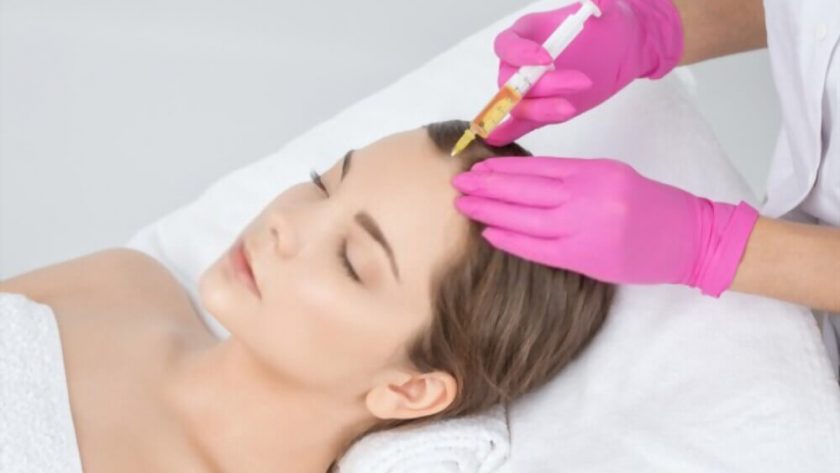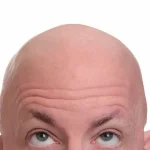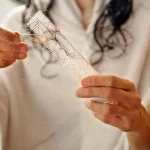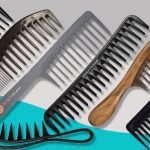Hair loss can be frustrating and difficult to cope with. Here we will explore some of the most common types of hair loss, and the available treatments.
What Causes Hair Loss?
Everyone experiences hair loss at some point in their lives. There are different causing factors, such as genetics, age, diet, stress, and lifestyle choices. There are many treatments available for hair loss, and the best option depends on the type of hair loss and the person’s preferences. Some common types of hair loss include alopecia areata (AA), female Pattern Hair Loss (FPHL), baldness, traction alopecia, and irregular scalp fibers. AA is the most common type of hair loss in women and is caused by an autoimmune disease.
What is FPHL?
FPHL[1] is a type of hair loss that affects mainly women over the age of 50. Baldness is the most common type of hair loss in men. And, caused by many factors, including genetics, age, and hormones. Traction alopecia results from constant pulling on the hair roots. Irregular scalp fibers can cause any type of hair loss, including AA and FPHL.
Hair Loss Pattern for Male:
Hair loss is the most common in men. It caused by a variety of factors, including genetics and hormones. There is currently no cure for male baldness, but treatments can help improve hair growth and quality.
Hair Loss Pattern for Females:
Hair loss in female caused by a variety of different factors, including genetics, hormones, and age. There is currently no cure for female baldness, but treatments can help improve hair growth and quality.
Different Types of Hair Loss:
There are a variety of different types of hair loss, and each has its own unique treatment. Some common types of hair loss include Alopecia Areata, Baldness, and Hair Loss from Chemotherapy. Here are some tips on how to deal with each type of hair loss:
Traction Alopecia:
Traction on the scalp is the reason of this type of hair loss. There are some other reasons also like wearing tight hairstyles, excessive braiding, or wearing a headband too tightly.
Alopecia Areata:
Alopecia Areata is a type of hair loss that results from an autoimmune disease. There are various medications and treatments available for it. In some cases, alopecia areata can be reversed with treatment.
Hair Loss from Chemotherapy:
Hair loss from chemotherapy can occur as a result of the treatment itself or from side effects of the treatment. Treatment options include wig-wearing or hair transplant surgery.
Baldness:
Baldness is the most common form of hair loss. It occurs when hair follicles stop producing hair. There are many causes of baldness, including genetics and age. Baldness can be treated with various medications and treatments, including transplant surgery.
Hair Loss while Cancer Treatment:
Cancer treatment can cause hair loss in many people. This type of hair loss is usually temporary, but it can be permanent in some cases. Hair loss from chemotherapy can be treated with various medications and treatments, including transplant surgery.
Telogen Effluvium:
This is one of the most common forms of hair loss, affecting about 50% of men and 60% of women over age 40. It occurs when hair follicles stop producing new hair and enter into a state of dormancy. Telogen effluvium can be triggered by numerous factors, including stress, poor diet, exposure to sunlight, personal health conditions, and medications. Treatment options include Rogaine, minoxidil, finasteride, and hair transplantation. Rogaine is the most common type of treatment for telogen effluvium, but it must be taken daily for 3 to 6 months in order to achieve results.
Tinea Capitis:
Tinea capitis is a skin infection caused by the fungus Malassezia furfur. It most commonly affects the scalp, but can also affect other parts of the body. Tinea capitis is treated with antifungal medications. Also called scalp ringworm, it is a common infection in children, and can be difficult to treat. This condition results in bald spots that may grow over time. Hair loss occurs in patches, often in circular patterns.
Scarring Alopecia:
Scarring alopecia areata is a condition in which the hair follicles are destroyed by an autoimmune response. It is most commonly seen in women, but can also be seen in men. Scarring alopecia areata is treated with chemotherapy and/or radiation therapy. Symptoms usually improve within several months after treatment begins, although full hair regrowth may take several years.
Lichen Planopilaris Alopecia:
Lichen planopilaris (LP) is a skin condition that causes patches of hair loss on the head and face. LP is caused by an autoimmune response that attacks hair follicles. LP can be treated with prescription medications or surgery.
Discoid Lupus Erythematosus:
Discoid lupus erythematosus (DLE) is a skin condition that causes red, scaly patches on the skin. DLE is caused by an autoimmune response that attacks the body’s cells. DLE can be treated with prescription medications or surgery.
Folliculitis Decalvans:
Folliculitis decalvans is an infection of the hair follicles. The infection can be caused by a number of different factors, such as contact with the infectious agent from a wound or skin lesion, use of cosmetics that contain oil, or exposure to certain bacteria. Treatment typically includes antibiotics and antiseptics to clean the area and relieve symptoms.
Dissecting Cellulitis of the Scalp:
Dissecting cellulitis of the scalp is a type of cellulitis that causes inflammation of the scalp. The cause is unknown, but it may be related to underlying skin disease or head injury. The inflammation can spread downward and cause pressure on the brain. Treatment includes antibiotics and analgesics to relieve pain and fever, as well as rest and ice treatment to reduce swelling.
Frontal Fibrosing Alopecia:
Frontal fibrosing alopecia is a rare but serious condition that causes hair loss on the frontal (front) part of the scalp. It’s caused by an overproduction of the protein fibroblast growth factor 2, which leads to damage to the hair follicles and their surrounding cells. Treatment involves medications and surgery to restore hair loss and prevent further damage.
Central Centrifugal Cicatricial Alopecia:
Central centrifugal cicatricial alopecia (CCCA) is a rare form of alopecia that affects the hair on the head and the front part of the neck. This type of hair loss caused by an autoimmune disorder in which the body attacks its own hair follicles. It starts at the temples and spreads gradually to other parts of the head and neck. CCCA treated with medications and surgery, but it’s often very difficult to restore lost hair.
Hair Loss Treatments
There are a variety of hair loss treatments available on the market today, and each has its own benefits and drawbacks. Here we will discuss some of the most common types of hair loss and the various treatment options available.
Traction Alopecia Treatment
Treatment options include shampoos containing minoxidil ( Rogaine ), topical creams ( Rogaine foam ), or injection therapy (Propecia). Minoxidil is the most common type of hair loss treatment for traction alopecia. But it used in conjunction with other hair loss treatments such as Rogaine foam or injections.
Baldness Hair Loss Treatment
There are a variety of treatments available for baldness, including surgery, hair transplantation, and over-the-counter treatments. Baldness surgery is the most common option and done using either a strip or full head method. Hair transplantation is the most permanent option. It requires a large number of hair follicles that taken from another part of the body and transplanted to the bald area. Over-the-counter treatments include minoxidil ( Rogaine ), topical creams ( Rogaine foam ), or injections (Propecia). These treatments are effective in reducing hair loss, but they do not always produce noticeable results.
Alopecia Areata Treatment
This is a rare form of hair loss, caused by an immune system response to an infection or injury. Treatment options include topical corticosteroids ( Dermablend ), systemic corticosteroids ( Prednisone ), and hydrotherapy ( RPET ). Systemic corticosteroids are the most effective treatment for alopecia areata, but they can be dangerous and have long-term side effects. Hydrotherapy is less effective than other treatments and has fewer side effects, but it is not available in most countries.
Telogen Effluvium Treatment
Treatment options include minoxidil ( Rogaine ), topical creams ( Rogaine foam ), or injections (Propecia). Minoxidil is the most common treatment for telogen effluvium, but it may not work for everyone. Topical creams are the most effective option, but they can be difficult to apply correctly. Injections are the fastest and most effective treatment, but they can also be expensive and require regular visits to the doctor.
Central Centrifugal Cicatricial Alopecia Treatment
There is no cure for central centrifugal cicatricial alopecia, but there are treatments that can help manage the condition. Some people use medications to control hair loss. Others have surgery to remove the patches of hair that are lost in CCCA. Both treatments can be successful in restoring some hair loss, but the condition often returns over time. Some people may also find relief from hair loss through natural means, such as using herbs and supplements.
Conclusion
There are a variety of hair loss treatments available on the market today, and each has its own benefits and drawbacks. Here we have discussed some of the most common types of hair loss and the various treatment options available.









